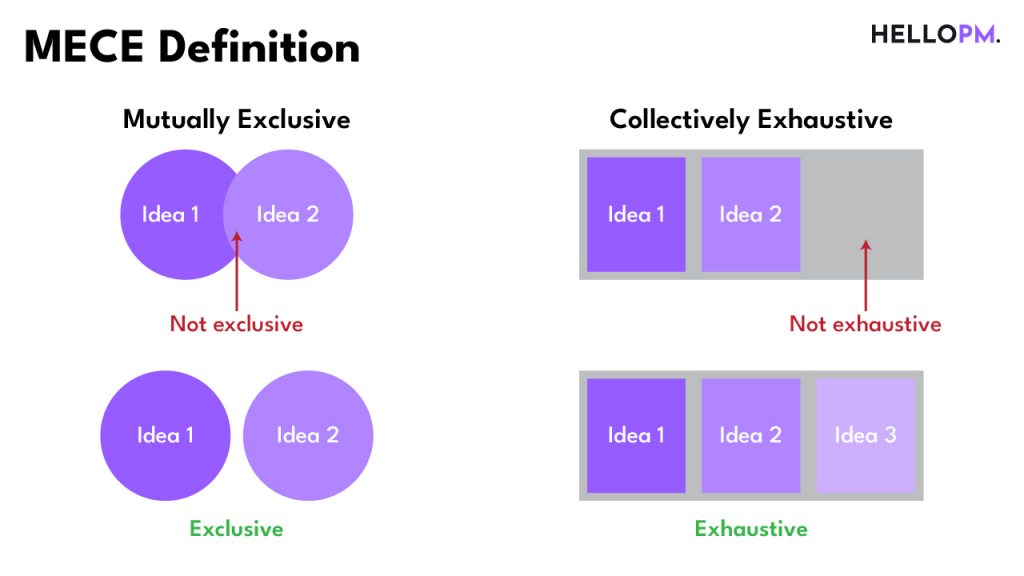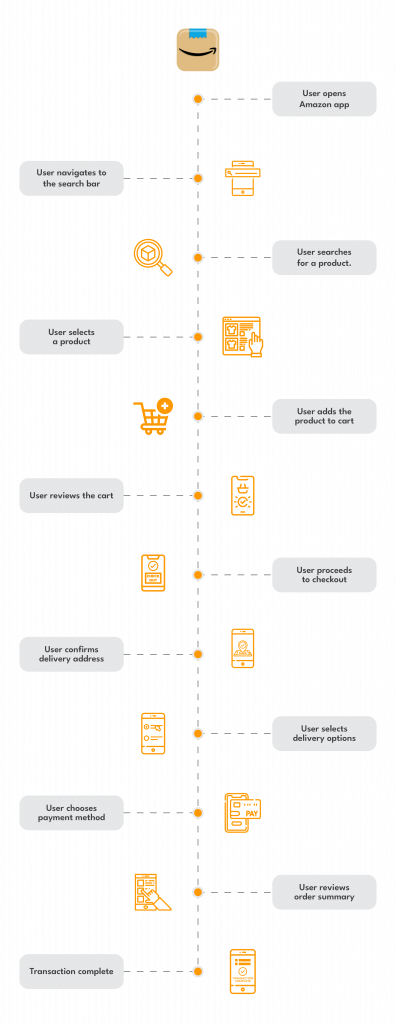In product management interviews, the interviewer typically poses questions such as:
- The number of orders for Swiggy has decreased by 20% daily. What steps would you take in response to this?
- Uber is experiencing a 20% increase in ride cancellations compared to previous levels. How would you address this as a product manager?
- Netflix is witnessing a 15% week-on-week decline in engagement. As a product manager for Netflix, how would you identify the underlying issue and develop a solution?
These are some of the most important and frequently asked questions in Product Management interviews, also known as RCA or Root Cause Analysis Questions.
In this comprehensive guide, let us find out the following:
- What are RCA questions and why are they important?
- What are the most commonly asked RCA Questions?
- What is the step-by-step approach to solving an RCA question?
- A case study to solve one of the most commonly asked RCA questions.
What are RCA questions and why are they important?
RCA, or Root Cause Analysis, is all about finding the cause of a problem within a product
These are usually very vague or generic questions without any hints or data and as a Product Manager it is your job to turn a really ambiguous situation into a solvable and crystal clear issue with the help of hypothesis, assumptions and critical thinking.
During RCA, the interviewer presents a problem, which could be about various aspects like User Journey, Drop-offs, Payments, etc.
Sometimes, RCA questions are disguised as general statements. For example, “Tell us how you would tackle a decrease in transactions at Paytm.” Many candidates miss out on the details and answer briefly due to the lack of specific numbers in such statements.
The interviewee’s task is to develop a structured thought process supported by data and reasoning to identify the likely cause of the problem.
But why do interviewers ask RCA questions?
It’s because these questions help them evaluate several key skills in a candidate:
- Product Sense: How well can you analyze the product from a broad perspective down to specific details?
- Problem Solving: Can you identify the root cause of a problem effectively?
- Structural Thinking & Communication: Are you able to structure and communicate your thoughts logically and prioritize them appropriately?
- Domain Knowledge: Do you possess a deep understanding of the product domain and relevant tools?
Finding out why things go wrong in different parts of a product’s life is super important for the product to do well for a long time. It’s like fixing problems from the beginning to the end so the product keeps getting better.
When you’re asked RCA questions, your main job is to figure out why the problem happened in the first place. But what really matters to the person asking the questions is how you try to solve it. Even if you don’t get the exact answer, showing that you can think carefully and logically is what’s really impressive.
These questions are different from other types because they’re not just about coming up with ideas. They’re about using the information you have to find the main reason behind a problem.
So, when you’re answering, focus on showing them that you can think deeply and ask lots of questions. That’s what they really want to see!
What are the most commonly asked RCA Questions?
- The number of daily orders on Flipkart has dropped by 30%. What steps would you take as a product manager to address this decline?
- Ola is experiencing a 25% decrease in daily ride bookings. How would you identify the root cause of this decline and propose solutions?
- Zomato has noticed a 20% increase in delivery delays. As a product manager, how would you analyze this issue and suggest improvements?
- Amazon Prime Video has seen a 15% decrease in viewer engagement. What strategies would you implement to identify the underlying reasons and enhance engagement?
- The number of monthly transactions on Paytm has decreased by 25%. How would you investigate the causes behind this decline and recommend solutions?
- Netflix is experiencing a 20% increase in account cancellations. How would you analyze this trend and devise strategies to retain subscribers?
- Google Maps is encountering a 20% rise in navigation errors reported by users. How would you investigate the root cause of these errors and enhance the app’s accuracy?
- Facebook has noticed a 20% decrease in daily shares of user-generated content. What measures would you take to understand the factors contributing to this decline and encourage more sharing?
What is the step-by-step approach to solving an RCA question?
Clarify the Problem
In RCA interviews, clarification questions are fundamental. They help extract the most insights from a problem.
To simplify, start by breaking down the problem into keywords and understanding their meanings. For instance, if Swiggy orders have decreased, ask what “ride” and “decreased” mean.
Next, seek clarification on the metric being used. Understand what it signifies.
Then, delve into the nature of the drop. Is it sudden, gradual, seasonal, or recurrent?
Determine the time duration of the decline.
Consider customer segmentation. Are certain localities or platforms (like Android) experiencing a more significant drop?
Do not make this mistake of asking too many questions and do not ask irrelevant questions which are out of context or unrelated.
MECE (Mutually Exclusive Collectively Exhaustive)

MECE Framework will help a Product Manager to discover that why a particular product metric was affected and using the approach we will try to find the Root Cause
4 major reasons why a metric can be affected are
- System
- External
- Internal
- Out of Control
System – While this may not be the foremost reason, it’s still important to analyze.
- Metric Logging is the process of tracking or logging a metric. If there’s a system error preventing this from happening correctly, it needs attention.
- Metric Calculation is the next parameter, involving how we compute a metric and whether there have been any changes or errors in the calculation method.
An example of this can be seen with Facebook Ads and Google Ads. If a pixel is not integrated correctly, it might result in inaccurate conversions or metrics. Additionally, changes in attribution or event setup during pixel implementation can alter metric calculations in various scenarios.
External Factors – These are reasons outside the company’s control or not directly controlled by the company.
- Competitors – If your competitor launches a new product, service, or makes announcements about changes or features, it could cause some metrics to fall. For example, if Instagram experienced a dip in their DAUs and MAUs in 2017, it might be due to the launch of TikTok.
- External Websites – This can be another issue impacting major metrics as websites like Google and Facebook act as discovery platforms for many products and services, directly affecting your website or app. For example, if you’re a Product Manager at a News Media Company and notice a sudden drop in active users, it might be because people can’t find you on Google or other external sources, impacting your metrics.
- Change in Market Trends – This can be understood through examples. During the initial days of TikTok, Instagram might have experienced a drop in their daily active user base as the trend shifted towards short-form video content. Similarly, YouTube could have faced similar drop-offs. Another example could be seen with the rise in remote jobs affecting websites and apps related to coworking office spaces.
- Demographics – It is equally important to figure out whether the affected metric is due to a demographic shift. Demographic factors can include gender, age, marital status, family size, occupation, education level, language, income, ownership, nationality, ethnicity, race, religion, and location. Digging deeper into demographics can help find the root cause effectively.
- Seasonality – This is very common and easy to understand, as many products and services are in higher demand during certain periods or seasons, with a gradual shift in the off-seasons. For example, a shake-selling company can expect to see a drop in daily transactions during winter months, and a similar trend can be observed for an air conditioner-selling company.
Internal Factors – These are the reasons within the company’s control and directly influenced by the company’s actions.
These factors typically contribute to a drop in product metrics, and interviewers are particularly interested in how you identify and address them.
- New Products and Features – Often, the launch of new features and products can impact certain product metrics. This could result from a bug, a UI/UX issue, or changes in user experience due to additions or deletions in the user flow.
Imagine a situation where you added a new feature to the product, causing changes in the current user flow, which led to a decrease in the number of transactions.
Product Cannibalization is another reason that often shifts metrics, where introducing something new to the product might cause a decline in certain metrics for the older version. This can happen intentionally or unintentionally.
- Specific Devices and Browsers affected -This is another important factor to consider when conducting an RCA, as often, due to internal or external changes, specific devices or browsers may be causing certain features or products to malfunction, or increasing the load time of the website or app, thereby affecting metrics.
- High Errors and Bugs – This is straightforward to understand and can serve as a starting point for the RCA. A large number of bug reports, app crashes, or support tickets can directly assist us in identifying the cause of declining metrics.
Out of Control Factors – These are the factors that nobody can control, and typically, there’s nothing that can be done to improve the situation. While interviewers might not focus on these factors, listing them can demonstrate that you’re considering all miscellaneous factors and delving deeper into the problem.
Political changes or natural disasters are a couple of examples of out-of-control factors.
A case study to solve one of the most commonly asked RCA questions.
1. Zomato is facing a 10% daily drop in its transacting users, how about you find the cause for this issue?
I will begin by asking some clarifying questions.
- Whom do we consider a transacting user?
Interviewer – A transacting user is someone who is making a purchase or completing a transaction.
- Since when has the drop become visible?
Interviewer – The drop has been visible on a daily basis since last week.
- Is there a specific day or time when this usually occurs, or is it a generic drop?
Interviewer – It is a generic drop.
- Is the drop consistent across all user segments, or are there specific segments experiencing larger drops?
Interviewer – It is consistent across all user segments.
Based on the responses, I have identified four possible categories where the root cause may lie. First, we will quickly check for any system or logging-related issues.
- Have any changes been made to the logging systems or any formulas for metric calculations that could have affected the visibility of the drop?
Interviewer – No, nothing of that sort has been affected
Now I will quickly analyze some external factors that could also contribute to the drop.
- In the past few weeks, have there been any significant changes in product offerings by our competitors?
Interviewer – There have been minor product developments, but no significant changes have been observed.
- Have we noticed any changes in the external environment that could directly or indirectly impact our app?
This could include issues such as operating system malfunctions causing the app to malfunction at certain times, or issues preventing push notifications or other marketing activities from reaching users, potentially contributing to the observed drop.
Interviewer – No such ambiguities have been detected or recorded
- Was the previous count of daily transacting users constant across all seasons?
I just want to ensure that this drop is not due to a seasonal effect or any change in market trends.
Interviewer – There is usually a seasonal effect, but in this case, that is not the reason. In the current season, we had a near-similar number of transactions, and this drop was ambiguous. There has been no significant change in trends either.
Since the drop is consistent across all user segments, we’ll now focus on internal factors to analyze if they’re the cause.
- Is this drop consistent across all the devices and browsers?
Interviewer – Yes it has been same across android and ios
- Has there been any sudden rise in the number of bug reports, app crashes, or support tickets can directly assist us in identifying the cause of declining metrics.
Interviewer – Yes there has been a rise in support tickets recently but no such increase has been seen in bug reports and app crashes
- Now, I would like to delve deeper into the user journey that leads to a user completing a transaction.

Interviewer – This is correct as you have clearly mentioned all the steps in the user flow
- Thank you for confirming. Now, I would like to analyze whether we have made any new product or feature changes in the last few weeks that are part of this user flow.
Often, the launch of new features and products can impact certain product metrics. This could result from a bug, a UI/UX issue, or changes in user experience due to additions or deletions in the user flow.
Interviewer – Now that you have accurately described the complete user flow, we have made a few changes in the last few weeks in the current user flow. We attempted to add a few elements on the payment screen to enhance the user experience.
Thank you for the confirmation. Based on my analysis, I have a few observations:
- Due to the internal changes in the user flow, it may have become longer, requiring users to perform additional steps to complete the transaction.
- The load time of the page may have increased, leading to a drop-off at that stage.
- There could be a potential break in the current flow, disrupting the user experience or cannibalizing the older flow for the worse.
However, these observations can only be confirmed with specific data points:
- User feedback on the new user flow
- Load time analytics for the payment page
- User drop-off at different steps of the flow, especially at the payment screen
- User heatmaps and click maps at different elements before and after the changes
2. Amazon is experiencing a 10% decline in the number of Add to Cart actions. As a product manager, it’s crucial to identify the root cause of this decline.
I will begin by asking some clarifying questions.
- Just to clarify, an “Add to Cart” action is an event that a user performs when they add any product to the cart, regardless of the product category, before proceeding to checkout.
Interviewer – Yes, that is correct!
- Since when has the drop become visible?
Interviewer – The drop has been visible on a daily basis since last 10 days.
- Is there a specific day or time when this usually occurs, or is it a generic drop?
Interviewer – It is a generic drop.
- Is the drop consistent across all user segments, or are there specific segments experiencing larger drops?
Interviewer – It is consistent across all user segments.
Based on the responses, I have identified four possible categories where the root cause may lie. First, we will quickly check for any system or logging-related issues.
- Have any changes been made to the logging systems or any formulas for metric calculations that could have affected the visibility of the drop?
Interviewer – No, nothing of that sort has been affected
Now I will quickly analyze some external factors that could also contribute to the drop.
- In the past few weeks, have there been any significant changes in product offerings by our competitors or have they launched any new major product?
Interviewer – There have been minor product developments, but no significant changes have been observed. However, there has been a surprise sale running by one of our biggest competitors.
Thank you for bringing that up. It could indeed be a contributing factor to the decline, but I’d like to examine all potential factors before drawing a conclusion.
- Now, I’d like to inquire if we’ve observed any changes in the external environment that could directly or indirectly impact our app?
This could include issues such as operating system malfunctions causing the app to malfunction at certain times, or issues preventing push notifications or other marketing activities from reaching users, potentially contributing to the observed drop.
Interviewer – No such ambiguities have been detected or recorded
- Is the “Add to Cart” event/action seasonal or dependent on factors such as festivals or sale periods? Have we had any sales or similar occasions in the last few weeks?
I just want to ensure that this drop is not due to a seasonal effect or any change in market trends.
Interviewer – There is usually a seasonal effect, but in this case, that is not the reason. The drop is lower than what we have during the same off season period during any time of the year
- Is this drop consistent across all the devices and browsers?
Interviewer – Yes it has been same across android and ios
- Has there been any sudden rise in the number of bug reports, app crashes, or support tickets can directly assist us in identifying the cause of declining metrics.
Interviewer – No there has been such rise observed as everything seems normal
Now, I would like to delve deeper into the user journey that leads to a user completing a transaction.

Interviewer – This is correct as you have clearly mentioned all the steps in the user flow
- Thank you for confirming. Now, I would like to analyze whether we have made any new product or feature changes in the last few weeks that are part of this user flow.
Often, the launch of new features and products can impact certain product metrics. This could result from a bug, a UI/UX issue, or changes in user experience due to additions or deletions in the user flow.
Interviewer – Now that you have accurately described the complete user flow, we have made a few changes in the last few weeks in the current user flow.
Thank you for the confirmation. Could you please specify what changes were made, and which steps in the user flow could have been affected by these changes?
Interviewer – There have been multiple changes made within the last 28 days. Each week, the team made alterations to elements on the product page, add-to-cart page, and payment page. These changes mainly focused on positional and UI/UX changes.
Can you detail out the changes that were made specially on the Product Page?
Interviewer – To highlight partner and banking offers, buttons such as “Add to Cart,” “Buy Now,” and “Change Qty” were moved below.
Additionally, secondary CTA buttons were hidden for certain categories like Electronics.
Thank you for the confirmation. Based on my analysis, I have a few observations:
- Due to internal changes in the user flow, where we moved the buttons down, there could have been an impact on the user flow, possibly leading to an increase in users dropping off before performing the “Add to Cart” event.
- Additionally, as Electronics is one of the primary categories, hiding secondary CTAs could also have affected the “Add to Cart” event.
- External factors may have also played a role, as the competitor’s sale might have led many users to visit Amazon solely to compare prices. If they found a considerable difference or a better deal on the competitor’s app/website, they may have dropped off without completing a purchase.
However, these observations can only be confirmed with specific data points:
- Heatmaps and user scroll scores for the product page can provide insights into how user behavior has changed after the recent adjustments.
- Additionally, it’s important to note the following metrics:
- The number of secondary CTA clicks on the Electronics category before the changes.
- The number of users dropping off from the product page.
Conclusion and Final Thoughts
This structured approach provides a comprehensive response to a Product Management RCA question in an interview. However, candidates should keep the following points in mind:
- Always keep the interviewer informed and ask for clarification when making assumptions or hypotheses.
- Allow the interviewer to provide guidance and steer the discussion in the right direction.
- In an RCA interview, there are no right or wrong answers; what matters most is your approach to the problem and how well you explain your answer while stating all assumptions.
Additional Resources
- How to build a strong Product Manager Resume?
- How to Solve Guesstimates: A Crucial Skill for Product Management Interviews
- The ultimate list of resources for your next Product Management Interview
- How to make a Product Manager Portfolio – The complete guide with Examples, Tools, Templates, and Free Resources
 WATCH HELLOPM COHORT IN ACTION
WATCH HELLOPM COHORT IN ACTION


